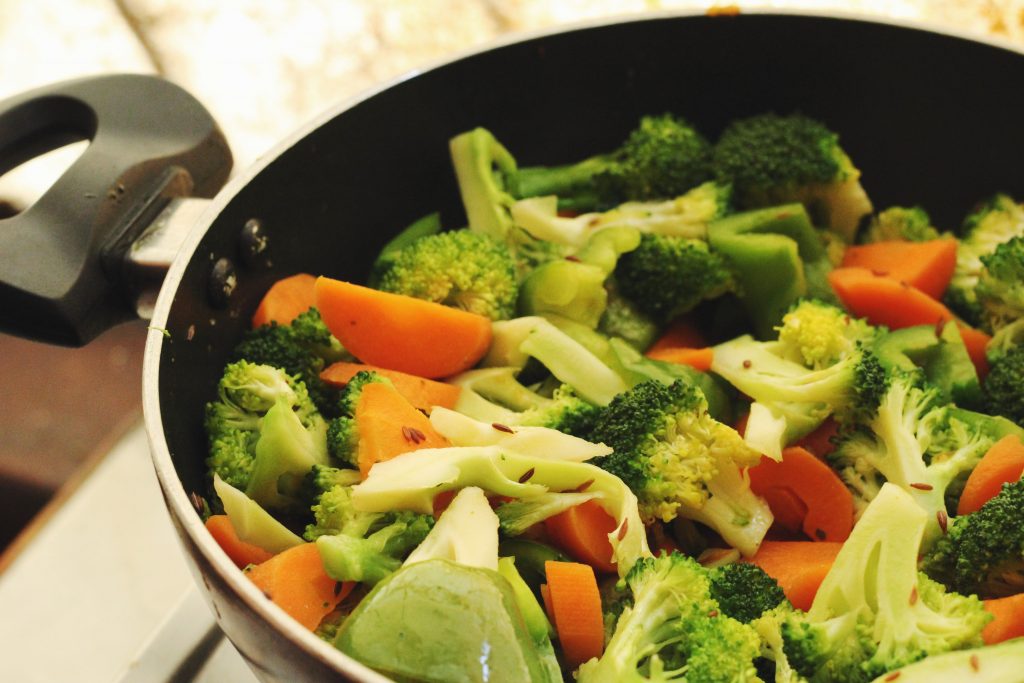There is always controversy, and numerous different opinions about the benefits versus the disadvantages of a ‘high-protein, low-carb’ diet. As you know, certain aspects of what most people call a keto regime are helpful, but if taken to extremes, eating very high protein and limiting carbohydrates can be terribly harmful.
Protein contains nitrogen, which the body converts into ammonia and then urea; this is excreted by the kidneys. This highly acidic process can be undertaken safely all the time, as long as the correct amount of protein is being eaten, but if your diet is consistently high in protein then your kidneys can begin to suffer from the effects of the extra work they need to do. This can be felt as anything from a slight backache to – at worse – full kidney failure.
A long-term high-protein diet has other potentially serious negative effects. For example, the body becomes too acidic and to combat this, it extracts calcium (which is very alkaline) from the bones and dumps it into the bloodstream to compensate. Over time, this can lead to osteoporosis, as well as an increased risk of heart disease, because circulating calcium makes the blood very viscous (scratchy) and can damage artery walls. High-protein diets also prohibit the intake of fruits and vegetables (which is not a good thing); although they do also limit high-GI refined carbs (which is a good thing).

For an optimum fat burning body you need to increase the amount of muscle tissue (LBM) in your body in order to maximize the amount of fat you can burn. However, this is not done by eating vast amounts of protein. Your body decides how much protein to use for muscle growth (as opposed to many other things) based purely on how often and how much you use your muscles. If you sat on your bed and consumed vast numbers of protein shakes, you would still get fat.
Low carb diets will offer short term weight loss but long term it will wreak havoc with your body. A carbohydrate is simply any food that contains glucose. It could be almost entirely glucose, or it may contain glucose and other nutrients. The easiest way to define a carbohydrate is that ‘it doesn’t have a face’. In other words, it’s grown in or on the soil and doesn’t come from animals. Years ago, carbohydrates were defined as ‘simple’ or ‘complex’ – this simply referred to the size of the molecules.
The carbs that you need to fill up with are vegetables and some fruits which will give you a high nutritional content (including antioxidants) and good levels of fibre. You also need to choose good quality starchy carbohydrates such as grains, pasta, bread, rice, cereals, etc. that have plenty of fibre which will aid transit time, i.e. the time it takes for a food to get from your mouth, have the nutrients extracted and pass out the other end.
Slow transit time is a sign of a poor digestive system. I often ask clients how often the open their bowels and they say, “Regular as clockwork – once or twice” I say, “That’s great, twice per day?” and they say “No – once or twice per week”. They then proceed to tell me their doctor tells them this is normal. It might be normal but it’s certainly not desirable! You should open your bowels every day, more than once. If you are putting three meals in, you need to get three meals out with the nutrients removed. If you are eating a high protein diet then this may not be happening and needs to be looked at. Fibrous vegetables include prebiotics (important to help maintain healthy gut bacteria). A high protein and low carb diet excludes many foods high in fibre, yet another reason to avoid it.

Fats, carbohydrates and protein are the three main nutrients (excluding water) and as important as each other, that your body needs to function. They work together to provide energy and on-going growth and repair. When eaten in the right amounts, and from the right sources, they provide us with protection from disease, slow down the ageing process, and give us vitality and longevity.
The amount of each nutrient that you need as an individual varies and is determined largely by your activity levels and your age. For example, athletes and more active people need more carbohydrates than sedentary people because they have a higher energy requirement – also weight loss is not an issue for them as most of the glucose they ingest is used up quickly and they don’t have to worry about the fat-storing effects of high blood sugar. Their lifestyle means they are fat burners.
Relying solely on meat to get your protein is not a healthy way to eat a balanced diet. Whether you’re a vegetarian or a meat eater, you must ensure that you consume vegetables and grains and non-meat sources of good quality protein such as the following:
Beans
Lentils
Fresh, uncooked seeds
Fresh, uncooked nuts
Wholegrains
Dairy products
Quinoa (a grain/fruit from South America)
Soya (e.g. tofu)

When it comes to the right amounts of fats, carbohydrates and protein, my Colour Code System does all the balancing out for you and it also makes it easier to follow something when you trust it. It is made up of four food groups and is not a faddy diet, it’s a simple way to follow a diet that is full of vitality, will give you energy and naturally reduce cravings – and of course your waistline! It is designed to focus on getting you healthy and balancing your hormones and gut flora so that you become a natural fat burner.

